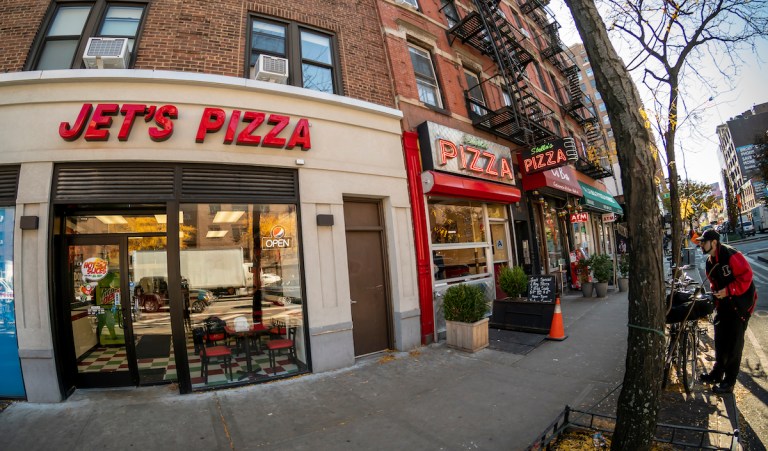
As restaurants look to find the right balance of automation and face-to-face service, Jet’s Pizza is seeing its voice order-taking robot take off.
The company shared Tuesday (July 25) in an emailed press release that its artificial intelligence (AI) robot for phone orders, powered by HungerRush’s technology, which is in 240 stores across 20 states, has taken more than 1 million orders.
In an interview with PYMNTS, Aaron Nilsson, chief information officer at the pizza chain, discussed customers’ positive experiences with the technology, even when they know they are speaking to a robot.
“The voiceover is communicating that it’s a robot,” he said. “We didn’t want to hide that in any way. … One really delightful thing that I hear on occasion when we pull recordings from this is that, at the end of calls, frequently, customers will say, ‘Thank you.’ That is inherently a human-to-human thing. … They’re having an interaction that’s human-like.”
The brand’s customers’ apparent openness to the technology is somewhat surprising, given consumers’ overall resistance to automation in the restaurant industry, as research from PYMNTS’ exclusive report, “Connected Dining: The Robot Will Take Your Order Now,” suggested.
The study revealed that 71% of consumers are uninterested in automated food delivery, and 67% are uninterested in robotics-powered food preparation. In each case, consumers’ top concerns included a fear of the loss of that personal touch.
Still, restaurants need these kinds of technologies, as ongoing labor challenges put pressure on margins. A study cited in the latest edition of PYMNTS’ “B2B and Digital Payments Tracker®,” a collaboration with American Express, “Inflation Puts Technology on the Menu for Restaurants,” found that 76% of restaurants are already using automation in at least three areas of operations.
Olivier Thierry, chief revenue officer at HungerRush, told PYMNTS that voice AI is especially useful in pizza restaurants, where consumers disproportionately call in their orders, adding that the technology is more accurate, efficient and consistent than many human employees.
“So, especially in the pizza world, where phone ordering is a huge component of the business, … it’s a very sweet way to reduce labor utilization and to provide a superior guest experience,” Thierry said.
Consumers are increasingly becoming more comfortable with voice assistants in their day-to-day lives. Data from PYMNTS’ study “ConnectedEconomy™ Monthly Report: The Evolving Digital Daily Edition” revealed that 86 million consumers now use voice assistants each month.
Down the line, it may not just be ordering. Thierry said he expects the company’s AI to be able to synthesize a range of first- and third-party data points to offer predictive recommendations, driving sales and frequency.
“[With] the data that we already collect, if you add analytics and AI on top of that to essentially create a recommendation for your store, with [the voice bot] saying, ‘Hey, [customer’s name], based on what I’m seeing right now, here’s what I plan on ordering next week. Do you want me to go ahead with that?’” Thierry said. “We definitely are seeing the beginnings of that trend.”